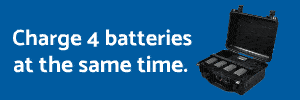After my recent experience with the battery charger meltdown, I'm curious on how safe it is to travel with these batteries. I have already purchased the LIPO bags for all of my batteries, along with the big LIPO bag to place the charger & batteries inside of while charging.
But when it comes to air travel and foreign countries, how safe is it?
I wanted to take the Anafi to Namibia in September. A long flight over and back, 17 hours in air. Then in Namibia, their electric current is 220 volts versus our 110 volts here in the states. While we were there in Namibia last year, they had electrical adapters to use with our American (110 volt) electrical plugs. I was able to charge our phones, batteries for our cameras, and our portable power packs with USB ports for power in the field. No real issues.
Thoughts/suggestions/concerns ???
But when it comes to air travel and foreign countries, how safe is it?
I wanted to take the Anafi to Namibia in September. A long flight over and back, 17 hours in air. Then in Namibia, their electric current is 220 volts versus our 110 volts here in the states. While we were there in Namibia last year, they had electrical adapters to use with our American (110 volt) electrical plugs. I was able to charge our phones, batteries for our cameras, and our portable power packs with USB ports for power in the field. No real issues.
Thoughts/suggestions/concerns ???





